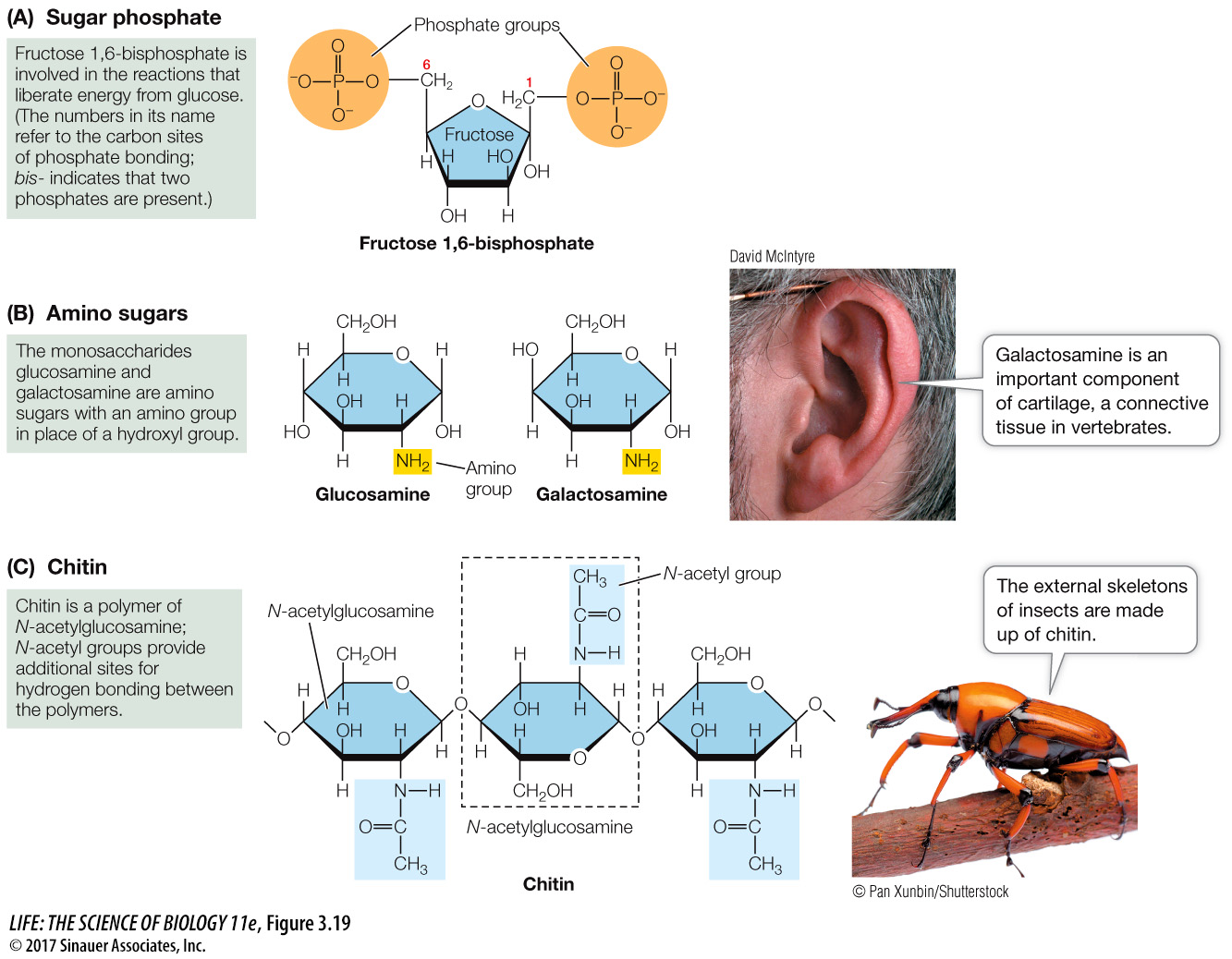Chemically modified carbohydrates contain additional functional groups
Some carbohydrates are chemically modified by the addition of functional groups such as phosphate, amino, or N-acetyl groups (Figure 3.19). For example, a phosphate group may be added to one or more of the —OH sites (see Figure 3.19A). Some of the resulting sugar phosphates, such as fructose 1,6-

58
When an amino group (NH2) is substituted for an —OH group, amino sugars, such as glucosamine and galactosamine, are produced (see Figure 3.19B). These compounds are important in the extracellular matrix (see Key Concept 5.4), where they form parts of glycoproteins, which are molecules involved in keeping tissues together. Galactosamine is a major component of cartilage, the material that forms caps on the ends of bones and stiffens the ears and nose. A derivative of glucosamine is present in the polymer chitin (see Figure 3.19C), the principal structural polysaccharide in the external skeletons of insects and many crustaceans (such as crabs and lobsters), and a component of the cell walls of fungi.